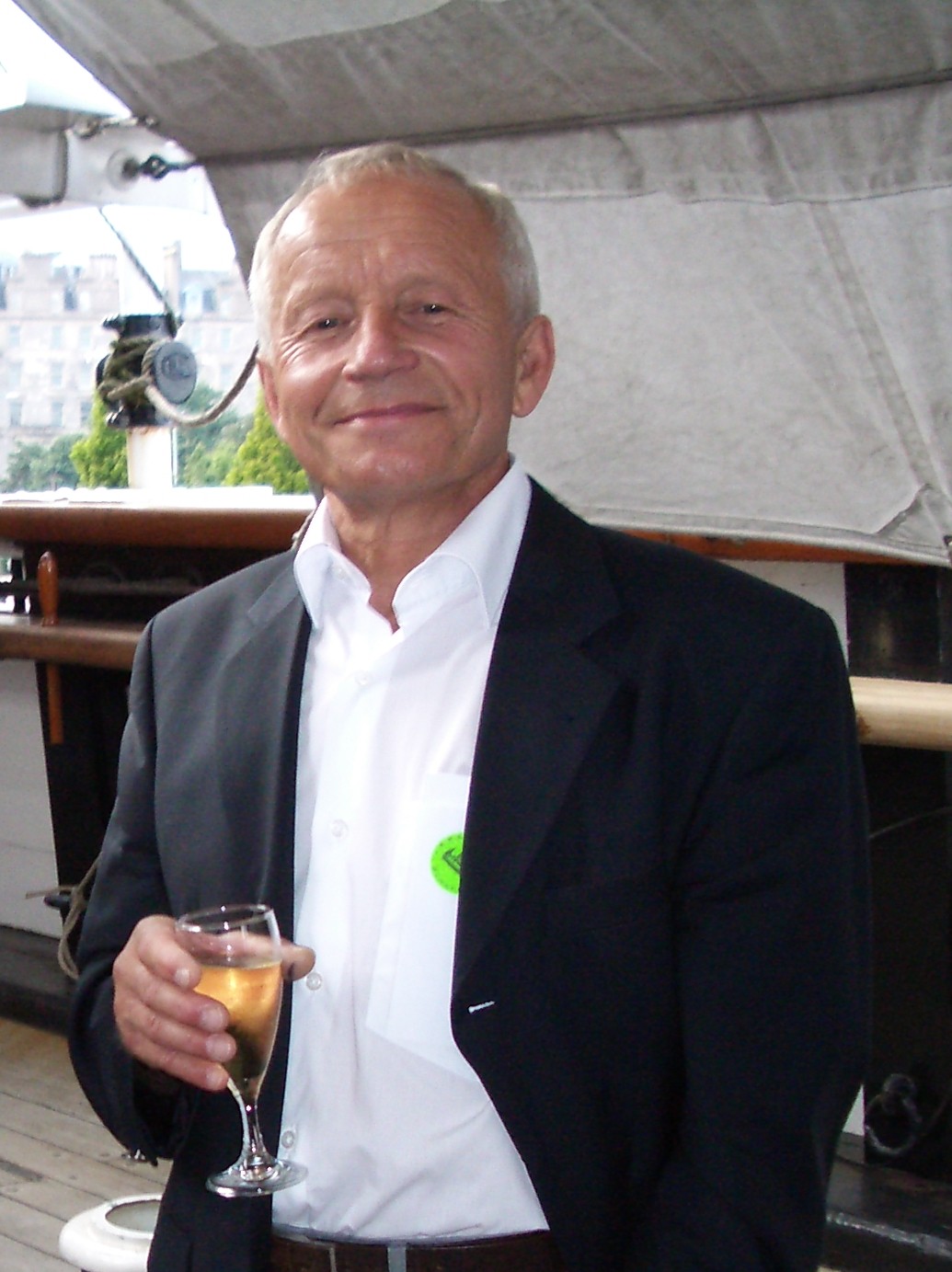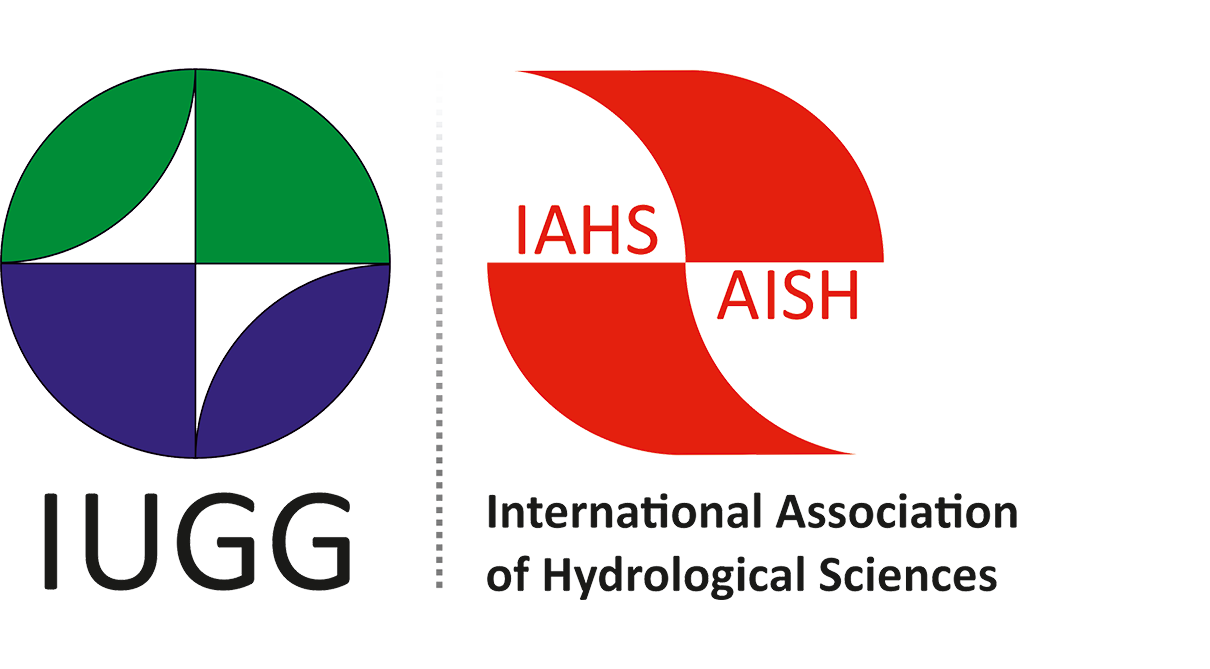IAHS News
Obituary, Wojciech Froehlich (1943-2013)

Wojciech at the reception organised for the ICCE Symposium held in Dundee Scotland in 2006 on board the RRS Discovery, made famous by its use by Captain Scott for his voyage to Antartica in 1901-1904 (taken by Art Horowitz).
Although some will already be aware of his passing, I would like to take this opportunity to record the untimely death of our friend and colleague Professor Wojciech Froehlich, from Nowy Sacz, Poland, on 10 October 2013. I had been in contact with him by email only a few weeks previously and his unexpected passing was a great shock. We were planning to meet at an IAEA Workshop in Vienna later this year and to have dinner and a glass of wine together at our favourite restaurant in Backerstrasse. He was shortly due to retire and was looking forward to spending time processing the vast mass of data that he had collected from the Homerka catchment over the past 30 years and writing papers, things which he had found very little time for in his very busy life in recent years. Wojciech was a longstanding and very active member of the International Commission on Continental Erosion and served as its President from 2002 to 2005. He will be greatly missed.
Wojciech was born in Nowy Sacz, in southern Poland, in 1943 and he inherited a strong and lifelong interest in nature and the environment from his father. He studied Physical Geography as a student at the University of Torun and graduated with a Masters degree in 1965. Lack of opportunities for further study saw him start his career as a school teacher, but he continued to look for possibilities for undertaking research for a PhD. In 1971, he was fortunate to obtain an assistant position in the Department of Geomorphology and Hydrology of the Institute of Geography of the Polish Academy of Sciences in Krakow, where he worked under Leszek Starkel and Kasimierz Klimek. He commenced a study of the Kamienicy Nawojowskiej River, which flowed through his home town of Nowy Sacz. His work was highly innovative for the early 1970s and focused on fluvial processes within both the catchment and the river channel. He was awarded his PhD in 1974 and his Habilitation in 1982 and was promoted to Professor in 1995. The latter was conferred on him by the Polish President, Lech Walesa. In 2001 he was elected a Corresponding Member of the Polish Academy of Arts and Sciences, based in Krakow.
After his PhD investigations on the Kamienicy Nawojowskiej River, Wojciech turned his attention to instrumenting the nearby Homerka catchment (19.6 km2), which provided the focus of his work throughout the remainder of his career. He established a small research station in the catchment from which he worked. This was progressively upgraded and expanded and by the time of his passing was a very impressive facility, notable for its well-tended flower garden. Essentially single handed, he established an impressive network of measuring stations in the catchment, which, by the time of his death, had record lengths of approx. 30 years. This was complemented by experimental areas such as the "experimental slope". Difficulties of obtaining equipment in the early days were readily overcome - he made much of the equipment himself! Studies of sediment transport were a particular focus of Wojciech's work in the Homerka catchment and he developed novel methods of measuring bed load transport and tracing soil redistribution and sediment sources.
He was amongst the first to recognise the potential of fallout radionuclides, and particularly caesium-137, for documenting rates of soil erosion and sediment redistribution and as sediment tracers and this resulted in his long-term involvement in three successive IAEA Collaborative Research Programmes aimed at advancing work in this field, which extended over nearly 20 years. He can lay claim to being one of the first to demonstrate the important role of unmetalled roads as sediment sources in upland catchments, to employ fallout radionuclides to trace suspended sediment sources and their dynamics during flood events and to recognise the potential for using Chernobyl fallout to document recent floodplain sedimentation rates. In addition to his work in the Homerka catchment, Wojciech also had a long standing interest and involvement in work in the Himalaya region, of India, where he studied fluvial processes in areas of high rainfall around Cherrapunji and assembled some very impressive records of floodplain sedimentation along the Teesta River, using caesium-137 and lead-210 as chronometers.
Wojciech's work in the Homerka catchment and in India is well known and highly respected internationally. It led to more than 60 papers in international journals and conference proceedings and more than 150 papers in national journals and related publications and was reported in papers presented at some 65 international symposia and workshops. When I first met him the late 1970s he could speak no English, but he rapidly engaged with the international community and became a leading figure. As indicated above, he served as President of ICCE from 2002 to 2005 and he was also a Council member of the World Association of Sedimentation and Erosion Research (WASER) from 2004 to 2010 and was involved in a number of IGU and IGBP activities. His high international standing was probably under-recognised in his home country, which rarely, if ever, provided him with financial support for overseas travel. However, his contribution was highly valued by the international community, which provided the necessary support for his participation in their activities.
Wojciech will be remembered for his dedication and for his wide ranging scientific and technical ability. He operated his research catchmernt essentially single handed, moving around on skis in the winter. He mixed concrete to construct his gauging stations, fabricated electronic equipment, operated his own well-equipped laboratory with its impressive gamma spectrometry suite and was a constant source of new ideas. He was particularly adept at exploiting the opportunities offered by modern IT and his impressive PowerPoint displays, with inserted videos of rivers in flood etc, frequently secured accolades as the best presentation at international meetings. A story is often told relating how, during the post-symposium tour associated with the ICCE Symposium in Canberra, Australia in 1994, the air conditioning unit in the coach failed in very hot weather, to the great discomfort of the participants. The supply of beer and water soon ran out. However, Wojciech came to their rescue. He located and remedied the fault, restarted the air conditioner and saved the day. Several people have told me that they will always remember Wojciech's smile. This is well captured by the accompanying photograph kindly provided by Art Horowitz.
Wojciech is survived by his two daughters, Katarzyna and Dominika and by several grandchildren.
Des Walling, Former President ICCE and Chairman IAHS Ltd.
